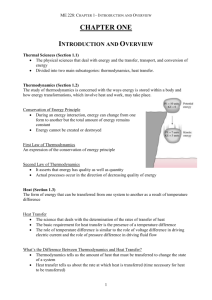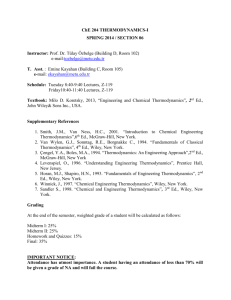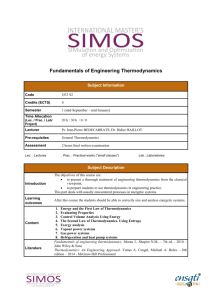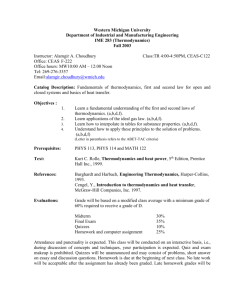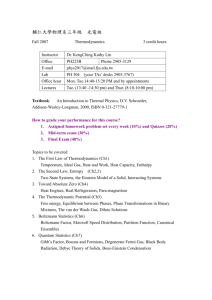BBE2105 Thermodynamics
advertisement
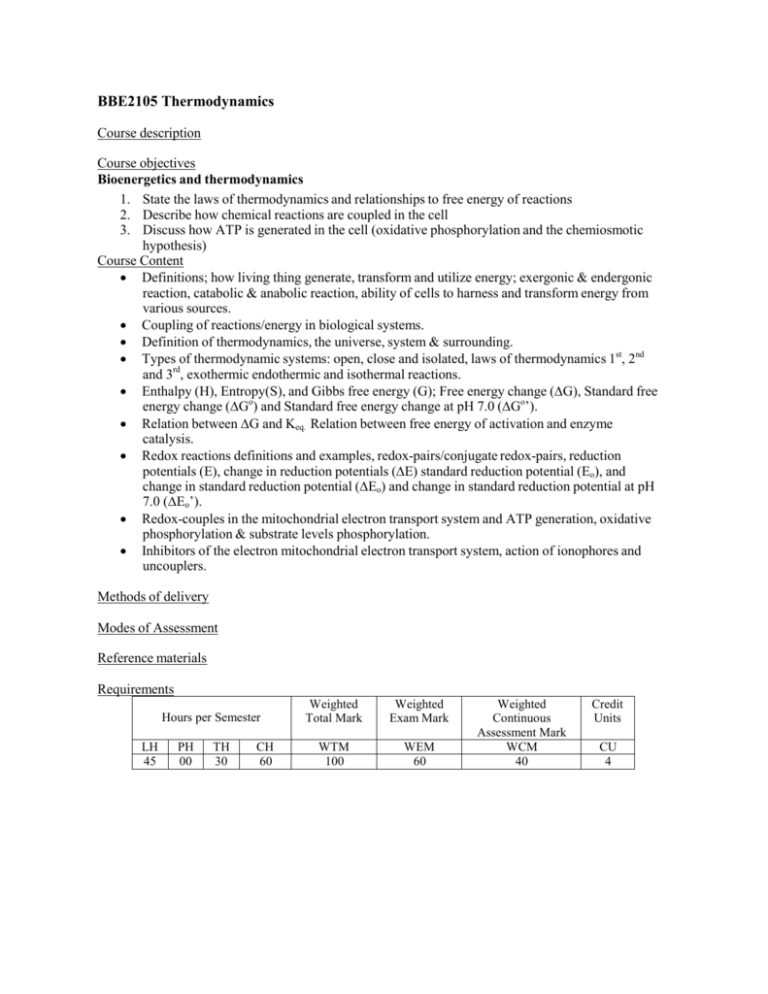
BBE2105 Thermodynamics Course description Course objectives Bioenergetics and thermodynamics 1. State the laws of thermodynamics and relationships to free energy of reactions 2. Describe how chemical reactions are coupled in the cell 3. Discuss how ATP is generated in the cell (oxidative phosphorylation and the chemiosmotic hypothesis) Course Content Definitions; how living thing generate, transform and utilize energy; exergonic & endergonic reaction, catabolic & anabolic reaction, ability of cells to harness and transform energy from various sources. Coupling of reactions/energy in biological systems. Definition of thermodynamics, the universe, system & surrounding. Types of thermodynamic systems: open, close and isolated, laws of thermodynamics 1st, 2nd and 3rd, exothermic endothermic and isothermal reactions. Enthalpy (H), Entropy(S), and Gibbs free energy (G); Free energy change (∆G), Standard free energy change (∆Go) and Standard free energy change at pH 7.0 (∆Go’). Relation between ∆G and Keq. Relation between free energy of activation and enzyme catalysis. Redox reactions definitions and examples, redox-pairs/conjugate redox-pairs, reduction potentials (E), change in reduction potentials (∆E) standard reduction potential (Eo), and change in standard reduction potential (∆Eo) and change in standard reduction potential at pH 7.0 (∆Eo’). Redox-couples in the mitochondrial electron transport system and ATP generation, oxidative phosphorylation & substrate levels phosphorylation. Inhibitors of the electron mitochondrial electron transport system, action of ionophores and uncouplers. Methods of delivery Modes of Assessment Reference materials Requirements Hours per Semester LH 45 PH 00 TH 30 CH 60 Weighted Total Mark Weighted Exam Mark WTM 100 WEM 60 Weighted Continuous Assessment Mark WCM 40 Credit Units CU 4





